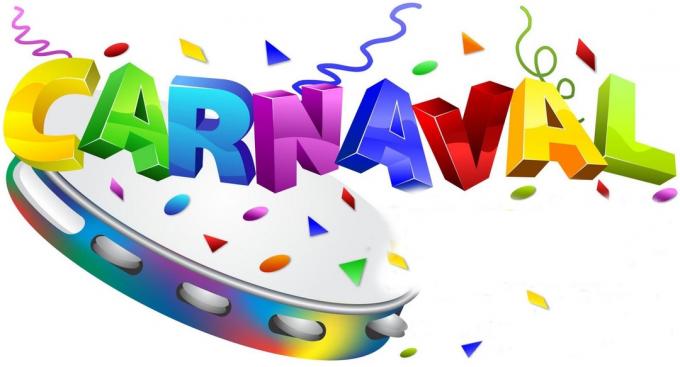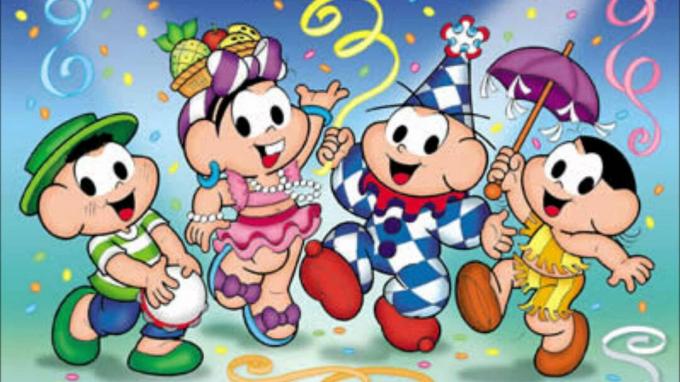We selected in this post some suggestions for your Children's Education Carnival Project.
carnival or Shrovetide they are the three days of festivities that precede Ash Wednesday. It's a word that comes from the Latin “meat is worth” and which means to say “farewell to the flesh”.
See also:
O Carnival it is a mobile celebration, that is, it does not have a defined day, but it is compulsorily celebrated on a Tuesday. Brazil is known worldwide for this celebration, which every year brings many tourists to our country.
And it was with this in mind that we selected these suggestions for your Early Childhood Education Carnival Project:
Index

Considering the carnival as a contributing phenomenon to the formation of Brazilian culture and taking into account its importance as a symbol of national identity, this project seeks to to develop work methodologies aimed at an interdisciplinary analysis of the carnival, promoting new knowledge possibilities for educators and students in an innovative and educational.
O Early Childhood Education and Elementary School Carnival Project focuses on working the interdisciplinary nature of carnival from a perspective of knowledge reconstruction, allied to technological resources, as a fundamental tool for the socialization of knowledge, disseminating information and cultures and, above all, not just transmitting, but reconstructing knowledge through interdisciplinarity.
Working carnival in an interdisciplinary way involves the contextualization of knowledge, evoking personal, social and cultural facts, especially work and citizenship.
This project aims to go beyond the simple juxtaposition of disciplines, with the participation of educators and students so that both can interact in pursuit of common goals.
Develop the theme of carnival in an interdisciplinary and innovative way, combined with technological resources, involving educators and students, providing a new vision of carnival from different perspectives.
Provide students to build relationships between new content and knowledge that already have, achieving learning that allows the interference in a new reality, triggering new actions.
See also:Carnival activities for early childhood education

The evaluation will be carried out permanently committed to the children's development. It will be observed what children know how to do, what they think about carnival and what is difficult to understand, as well as learn more about their interests.
Fifteen days.

I also recommend: Activities Interpretation of text about the carnival

The Carnival Education Children's Project – Dancing with the magic of Carnival was born at the same time as the first week of classes, but known as adaptation. In this period, the child needs a special look, as the new world around him causes him insecurity, so the project intends to address the party of carnival in favor of children's experimentation and communication with this new world, offering children the opportunity to meet and create in the midst of playfulness. Thus, the child's socialization will develop harmoniously considering Carnival as a typical party rich in its culture, which finds in the movements of music and dance the diversity of Brazil.
Promote playful activities that encourage understanding of the Carnival Festival as a culture, encouraging socialization and development in the first week of school.
Run cotia | At the aunt's house | Runs vine | At grandma's house | Handkerchief in hand | Fell to the ground | Girl (the) beautiful (the) of my heart | Child: Can I play? | Wheel: Yes! | Child: No one will look? | Wheel: No!
At this moment, the children in the circle lower their heads and cover their eyes with their hands. The child who is out of the circle drops the handkerchief behind someone else who is sitting, picking up. The empty place on the wheel is the pike. Whoever loses is out of the circle (or in) and the game starts again.
The evaluation will be continuous taking into account the evolution, participation, attention and involvement with the activities carried out during the mini-project period.
From an early age, children learn a lot about the world, asking questions and listening to facts and stories of your family, friends even watching TV, videos and or frolicking and enjoying magazines and newspapers. They also experience and interact in a context of: concepts, tastes and customs, forming their ideas and knowledge about the world around them.
Through this thought, the theme “The Carnival” will be worked out in an integrated manner, meeting the interests of children, respecting their needs, curiosities and ideas.
Taking an interest in and showing curiosity for the social world, asking questions, imagining solutions to understands it by expressing its own opinions about the events, seeking information and confronting ideas.
The evaluation will be carried out permanently committed to the children's development. It will be observed what children know how to do, what they think about carnival and what is difficult to understand, as well as learn more about their interests.
Schedule: 1 to 2 weeks.
O Children's Education Carnival Project – “The Carnival of Brazil”, can be developed through its history.
To make the history of Brazil's carnival interesting, take reports and photos on the subject to the classroom. Observing the interest of the children, a research can be proposed for the group as a homework assignment.
The material that the children bring can be presented at the wheel. Everyone should have the opportunity to show their research to the group and talk about it. Then, they will be able to make informative murals or posters.
The informational murals or posters draw the attention of even the parents or guardians of the children, who also stop in front of them to read, observe and comment on the information contained therein. And they will also be able to check the use of the research done by their children.
In addition to specific activities such as: informative sessions; time for news and surprises; researches; picture comments and directed observations; related activities can also be carried out, with the children, to help in the clarification and fixation of the studied subject, exploring communication and expression through pantomimes, spoken choir, poetry, games and recreation.
Also explore mathematics in order to develop mathematical concepts. And sing carnival songs, as it is possible to see that most children do not know the songs presented, but they all learn easily.
Therefore, it is necessary to have fun moments with lots of music and dancing.
During this project, it is important to observe and understand the children's interest in learn and participate in the proposed activities with attention, creativity, responsibility and much dynamism.

Carnival is a festivity that is worth deepening and working with children. Despite being a reference in Brazilian culture, its origin is very old. Originating in Ancient Rome, it was incorporated into Christianity marking a period of festivity between the Day of Twelfths and the Wednesday before Lent. The way in which it is celebrated has varied over time and what we have today has undergone a great influence of the celebrations that took place during the Modern Age with masked balls, costumes and cars allegorical.
My suggestion is very simple, lasting a week. It can be improved if developed over a longer period of time or you can choose just one day and develop the theme deeply.
In a round of conversation, ask the children what Carnival is. Write their impressions on a large poster and ask them to draw pictures about the topic.
Note: With elementary and high school children, it is worth getting into issues related to origin and its relationship with religion. With Kindergarten students we can only stick with the symbols.
Bring carnival images from different parts of Brazil and the world, discuss their differences and similarities, compare them with information collected the day before. The work can be enriched with the respective musical styles.
Build theme-related material for school decoration and children's use. Masks, frevo parasols, musical instruments
Making costumes, allegories and props.
Note: With elementary and high school children, only make allegories and props. With Kindergarten students include the costumes.
For Early Childhood Education: Party with confetti, streamer and lots of music. Children must be dressed normally and will use the costumes, allegories and adornments made by them.
For Elementary and High School: Exhibition with the constructed material.
Subscribe to our email list and receive interesting information and updates in your email inbox
Thanks for signing up.